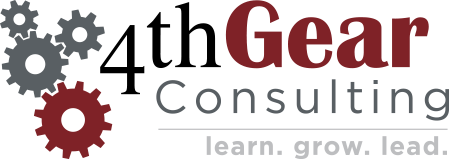When I was back in college and thought I was smart enough to become an engineer, I remember learning all about vectors in physics class. A vector is an arrow that represents direction and force. As I work with organizations to help them manage change, the same concept comes into play. When a business is trying to become something different, better or more effective, the leaders in the business must manage all of the different forces that are affecting the change to ensure that they are all exerting pressure in the same direction. In most cases, organizations concentrate on one or two vectors and the remaining vectors are actually pushing back against the change they are trying to initiate.
There are countless ways to think about organizational change but in my experience there are 8 different vectors that can push for, or against the changes that are being made in any business. Certainly the size and complexity of the business can increase the challenges but even in small businesses the vectors are all present.
In order to successfully execute change it is critical to know the goal of the change, not just at a high level, but with details that help everyone in the business understand how it affects them, their job responsibilities and their own behavior change. People do not resist change. They resist change they do not understand or they do not agree with. The first step in that process is to clearly define the change so that people will know how to think, act, and prioritize in the new state.
Communication
Often, businesses create a series of memos, documents, and communication vehicles that tell the employees about the change. What they sometimes fail to do is help each department or function work through the process of what that communication means for them as a team. People do not gain the level of understanding they need to act differently from communication directed at them, they only get there through a series of iterative conversations that are had with them.
Culture
Every change in an organization touches the very culture of the business. Culture might best be defined as the set of organizational habits that currently exist, and habits are hard to change. People will need to think differently, interact differently, learn new skills, create new processes and become less comfortable, at least initially, for change to be successful. That means significant thought needs to be given to how the culture must shift to execute the new strategy or focus.
Leadership
If you want people to behave differently then leaders have to go first. One of the biggest reasons organizational change fails is that leaders want others to change, but the leaders themselves continue to operate the same way. This sends a series of conflicting messages to the organization that essentially tells employees change is not important and they have implied permission to keep doing things the old way. Leaders have to define and execute their own set of new leader behaviors if they want to be a catalyst for change and growth in the business.
Coaching
Ultimately, organizational change comes down to individual change. No business becomes different if its people don’t think and act differently. The greatest lever any organization has to change individual behavior is effective coaching. Businesses with great coaches adapt more quickly, build skills and capabilities faster, improve performance more consistently and achieve greater results. If you are trying to drive organizational change, without effective coaching both outside of the business as well as internally, you are working way too hard and your chances of success are dramatically diminished.
Structure
As organizations grow, structure must grow with it. Silos and functional turf wars can develop and changing the structure is part of the way businesses break down these walls and facilitate innovation, communication and collaboration. Businesses should decide on how the organization should be built to maximize success and minimize internal chaos, and use that blueprint to support the changes they are making.
Process
Often organizations profess that they want to operate differently, but leave processes in place that actually inhibit who they say they want to become. We can say that we want to put customer service above internal policies but if we have processes that mean a lot of work to more effectively serve the customer, our employees may choose the path of least resistance and forego the better service because it requires more effort. There are countless examples of an organization being its own greatest enemy when it comes to what they want versus how they are organized from a process standpoint.
Talent
There has to be a strong link between who you want to become as an organization and who you hire to help you get there. Do you want risk takers, risk avoiders, complex thinkers or intuitive adapters? You may need all of these types of people depending on the function they work in. In that case it’s critical to recruit leaders who can fully engage a diverse employee population and move them forward. Too often, businesses try to lead change without giving enough thought to what the talent needs to look like in the future and they keep recruiting using yesterdays philosophy, while they try to build tomorrows company.
Change isn’t easy in any organization. By definition, a business is built, trained and organized to act exactly like it does in its current state. But if you plan for change keeping these 8 vectors in mind and get them all exerting force in the same direction, you can make it happen faster and easier than if you are fighting against the very organization you are trying to change.
Leading Through Influence
We develop better leaders so they can build a better future. Contact Us to learn about leader development via our training, workshops and executive coaching.


